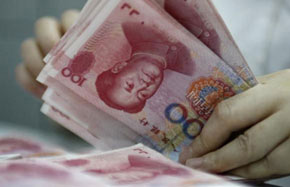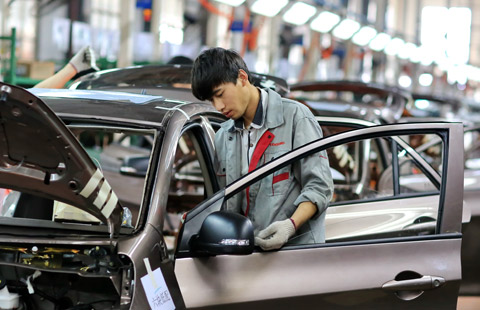China's SOEs move ahead on market reform
BEIJING — China's major State-owned enterprises (SOEs) will complete corporate governance reform by the end of 2017 in efforts to overhaul inefficient State companies.
The reform targets SOEs supervised by the central government excluding financial and cultural firms, according to an action plan released by the State Council on Wednesday.
A contemporary corporate system aims to separate government administration from business operations by restructuring them into limited companies. As a result, SOEs can function as efficiently as other businesses.
SOEs once played a key role in the China's economy, but they are seen as being bloated in size and inefficient while commanding significant resources, such as land and loans.
With a shrinking share of economic output, they still control key sectors of the economy, such as energy and telecommunications. The outdated corporate structure of SOEs have become the main culprit of their low efficiency.
In the past several years, China has said market forces should play a decisive role in allocating resources and declared SOE reform a priority.
Corporate governance reform is one of the key tasks of SOE reform.
According to the plan, the reform will proceed with disciplined operations when handling SOE ownership structure and corporate debts.
For central SOEs that become wholly State-funded enterprises, registered assets will be calculated according to the net asset value of the previous year.
Those that become enterprises with diverse equity structures will go through specific procedures, including asset verification, appraisal and financial audit.
Central SOEs will be granted support in the reform, including management of allotted land, tax benefits, registration of changes, and take-over of business license qualifications.
In addition, the mixed-ownership reform, which diversifies the shareholding structure of SOEs, will take off in the second half of the year.
The reform will introduce private or foreign investment in the shareholding of SOEs. Oil and gas companies will be at the forefront.
To make SOEs leaner and healthier, the State-owned Assets Supervision and Administration Commission (SASAC) also plans to reduce the number of central SOEs to under 100 this year, with coal, steel and heavy equipment manufacturing industries in the spotlight.
"Reducing the number itself is not the goal of restructuring. We care more about what the reforms will actually bring," said Peng Huagang, deputy secretary-general of SASAC. "We are not seeking abrupt change. We look for a chain reaction."
China's State-owned companies reported steady profit growth in the first half of the year, totaling 1.41 trillion yuan ($208.9 billion), up 24.3 percent year-on-year, according to the Ministry of Finance.
Coal, petroleum and petrochemical, and transport sectors posted strong annual growth while sectors such as electricity suffered profit falls.
Some 48 central SOEs filed places on the Fortune Global 500 list this year. China's State Grid and oil giant Sinopec were second and third, with revenues reaching $315 billion and $268 billion respectively in 2016.

























